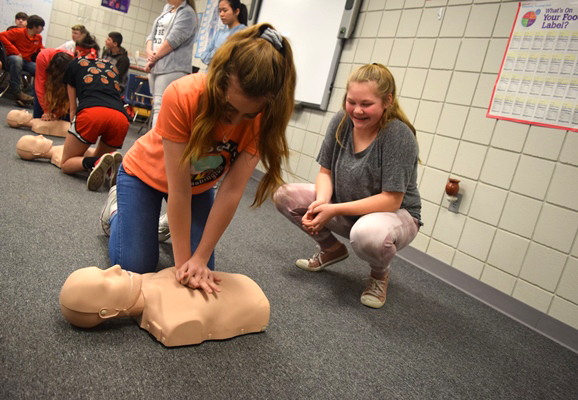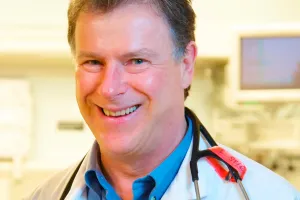Not sure if you can give good CPR? New data shows you probably can
 CPR training. Photo credit Celia Looney. Creative Commons.Bystanders who come to the aid of someone whose heart has stopped are performing high-quality CPR that consistently meets the latest guidelines, according to a study led by Drs. Shannon Fernando, Christian Vaillancourt and Ian Stiell. Fifteen percent of cardiac arrests happen in public places, and chance of survival doubles if bystanders perform CPR and use an Automated External Defibrillator (AEDs). Many of these life-saving tools can record CPR quality and help bystanders improve their technique. Ottawa paramedic Stan Morrow came up with the idea of analyzing this data to measure quality of CPR. The research team looked at data captured by public AEDs during 100 cases of cardiac arrest in Ottawa between 2011 and 2016. They found that bystanders performed high quality CPR, with an average of 111 compressions per minute, an average compression depth of 5.3 c.m, and an average of 76 percent of resuscitation time spent on chest compressions. Most of these compressions adhered to the 2010 Resuscitation Guidelines.
CPR training. Photo credit Celia Looney. Creative Commons.Bystanders who come to the aid of someone whose heart has stopped are performing high-quality CPR that consistently meets the latest guidelines, according to a study led by Drs. Shannon Fernando, Christian Vaillancourt and Ian Stiell. Fifteen percent of cardiac arrests happen in public places, and chance of survival doubles if bystanders perform CPR and use an Automated External Defibrillator (AEDs). Many of these life-saving tools can record CPR quality and help bystanders improve their technique. Ottawa paramedic Stan Morrow came up with the idea of analyzing this data to measure quality of CPR. The research team looked at data captured by public AEDs during 100 cases of cardiac arrest in Ottawa between 2011 and 2016. They found that bystanders performed high quality CPR, with an average of 111 compressions per minute, an average compression depth of 5.3 c.m, and an average of 76 percent of resuscitation time spent on chest compressions. Most of these compressions adhered to the 2010 Resuscitation Guidelines.
"Bystanders who perform CPR can and do save lives. Despite limited training, we found that these bystanders are providing high-quality CPR that consistently meets the latest guidelines," said Dr. Vaillancourt.
Reference: Resuscitation
Authors: Shannon Fernando, Christian Vaillancourt, Stanley Morrow, Ian Stiell
Funders: This research was possible because of generous donations to The Ottawa Hospital for Research to Improve Patient Care. The researchers have also received support from the Canadian Association of Emergency Physicians.
The Ottawa Hospital: Inspired by research. Driven by compassion
The Ottawa Hospital is one of Canada's largest learning and research hospitals with over 1,100 beds, approximately 12,000 staff and an annual budget of over $1.2 billion. Our focus on research and learning helps us develop new and innovative ways to treat patients and improve care. As a multi-campus hospital, affiliated with the University of Ottawa, we deliver specialized care to the Eastern Ontario region, but our techniques and research discoveries are adopted around the world. We engage the community at all levels to support our vision for better patient care. See www.ohri.ca for more information about research at The Ottawa Hospital.
University of Ottawa: --A crossroads of cultures and ideas
The University of Ottawa is home to over 50,000 students, faculty and staff, who live, work and study in both French and English. Our campus is a crossroads of cultures and ideas, where bold minds come together to inspire game-changing ideas. We are one of Canada's top 10 research universities--our professors and researchers explore new approaches to today's challenges. One of a handful of Canadian universities ranked among the top 200 in the world, we attract exceptional thinkers and welcome diverse perspectives from across the globe. www.uottawa.ca
Media Contact
Amelia Buchanan
Senior Communication Specialist
Ottawa Hospital Research Institute
Office: 613-798-5555 x 73687
Cell: 613-297-8315
ambuchanan@ohri.ca
Learn more about:
The Ottawa Hospital is a leading academic health, research and learning hospital proudly affiliated with the University of Ottawa and supported by The Ottawa Hospital Foundation.


